Famous photography – the most well known pictures and the people who took them.
Does a photograph have the power to change the world?
There are incredible photographers and journalists all around the world doing tremendous work reporting on the atrocities that happen on our planet, these people deserve everything that’s coming to them, they should be cherished and celebrated for exposing war, famine and injustice in all its forms. To those risking everything seeking out the truth so we may benefit, thank you.
Photography is an incredibly important medium and whilst the advent of digital technology has saturated the world with photographs, there are some that stand above the rest and remain in the collective memory of society. These images inform culture and remind us of what it means to be human.
What is it that makes a photograph famous?
Personally, I think it’s something that speaks to the human experience in its most raw form. The emotions that they stir don’t diminish over time and their legacy is everlasting. These images inspire us to make the world a better place, they remind us of the great things we have collectively achieved as well as the errors we have made and the terrible things we should never repeat. Photography keeps history alive and reminds us that it was real. The good and the bad, these are not just stories that happened somewhere else to other people, they collectively tell the story of humankind, they help define us and help us shape a better future.
The thing I find most fascinating about the photographs that endure is that the technical elements of the image are completely ignored and entirely irrelevant. It even feels grotesque to consider composition or exposure. These photographs capture moments so deeply profound that the only consideration left is how it makes you feel
WARNING: This post contains some distressing photographs. One in particular made me cry whilst writing this article. Whilst tragic, I feel the inclusion of potentially distressing photographs is important. We need to acknowledge that photography should be used to inform and educate, regardless of its contents, and that we all share the same human experience.
Earthrise from Apollo 8 – William Anders
On December 24, 1968, the crew of Apollo 8 became the first humans to leave Earth’s orbit and venture into space. As they orbited the moon, they took turns taking pictures of the lunar surface. However, it was when they turned their cameras towards Earth that they captured one of the most famous photographs of all time. The photo, which came to be known as “Earthrise,” shows our planet rising above the moon’s horizon. The sight was so beautiful and awe-inspiring that it prompted one of the astronauts, William Anders, to say, “We came all this way to explore the moon, and the most important thing is that we discovered Earth.” The photo went on to become an iconic image of the Space Age and has been hailed as one of the most influential photographs of all time.
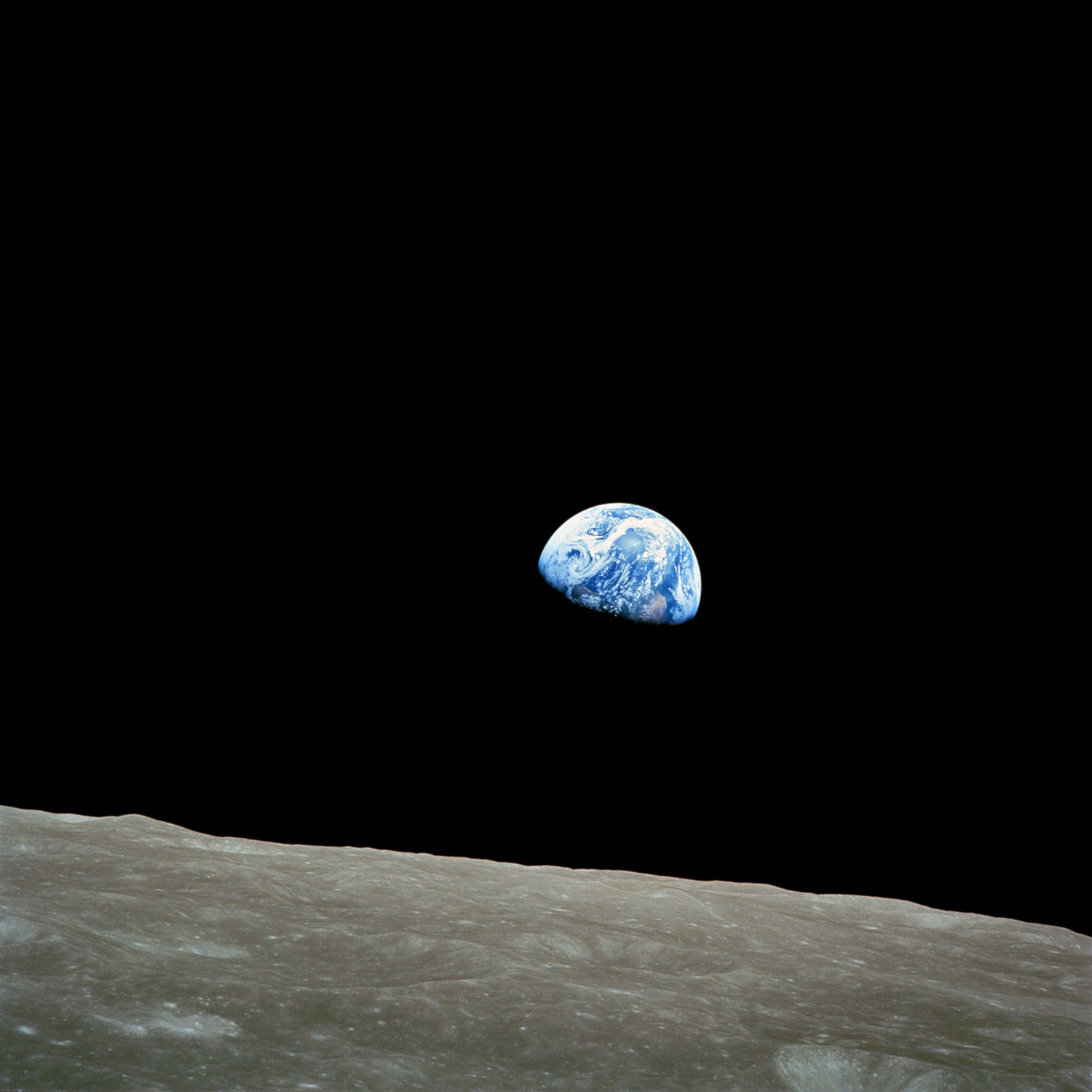
“the most influential environmental photograph ever taken”
Below is the original image before being cropped and rotated. This is how the crew saw the image play out in front of them. It’s interesting how the image was rotated to replicate how we experience the sun rising on earth.

The Burning Monk – Malcolm Brown
The Burning Monk is a photo taken by Malcolm Brown on June 11, 1963. The photo shows Thích Quảng Đức, a Vietnamese Buddhist monk, sitting in the lotus position while engulfed in flames. The monk had been protesting the policies of the South Vietnamese government, and his self-immolation drew international attention to the cause of Vietnamese Buddhists. The photo was widely circulated and helped to galvanize opposition to the Vietnam War. In addition, it won a Pulitzer Prize for Brown, cementing its place in history. Today, The Burning Monk continues to be an iconic image of protest and sacrifice.
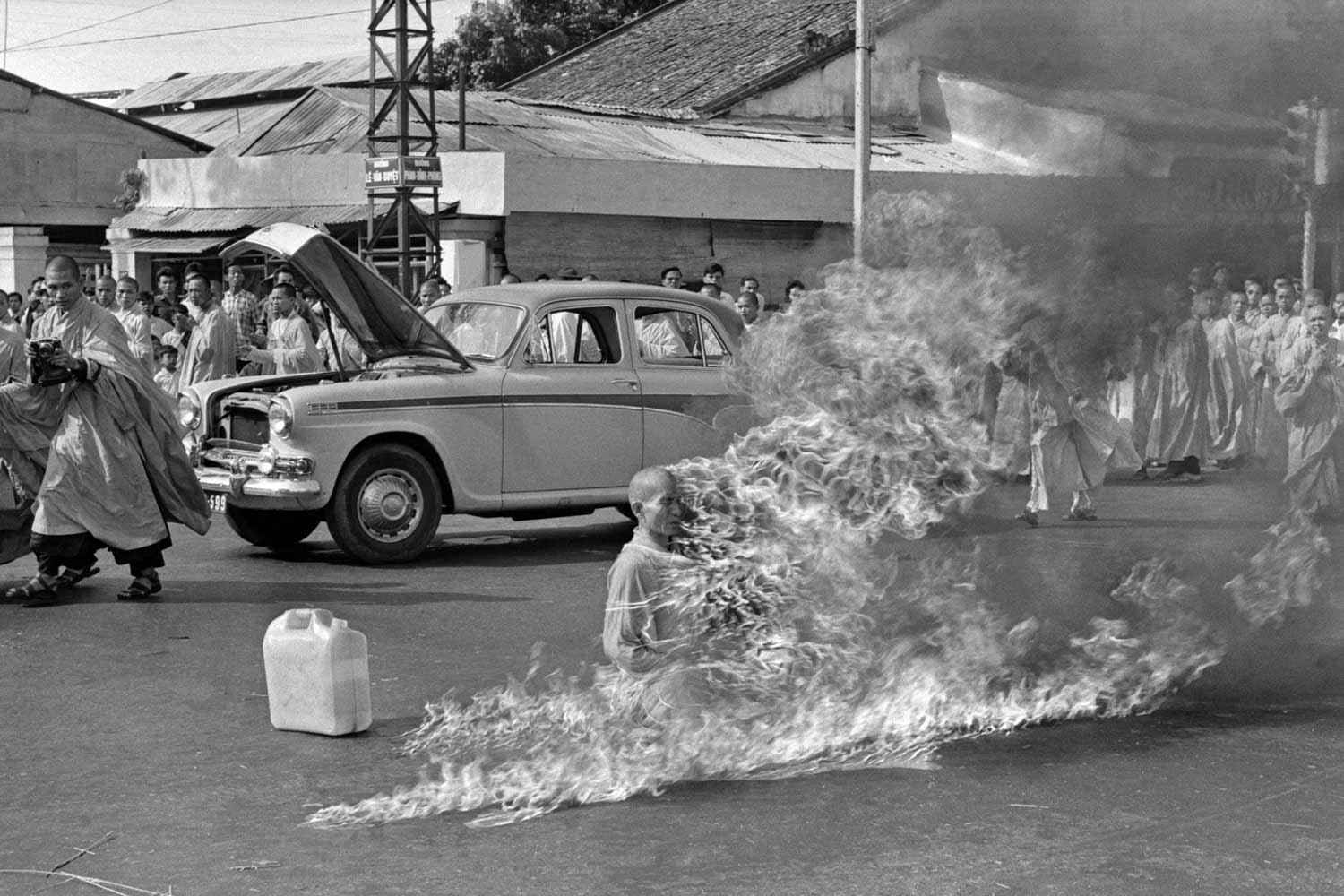
“No news picture in history has generated so much emotion around the world as that one.” – John F Kennedy
Raising the Flag at Iwo Jima, Joe Rosenthal
Raising the Flag on Iwo Jima is one of the most iconic photographs of the 20th century. Taken by Joe Rosenthal on February 23, 1945, the photo shows six soldiers raising the American flag atop Mount Suribachi after a successful battle against the Japanese. The image was widely circulated in newspapers and magazines, and it came to symbolize the American spirit of determination and resilience. Rosenthal won a Pulitzer Prize for the photograph, and it now hangs in the Smithsonian Institution. The soldiers in the photo were all members of the United States Marine Corps, and three of them were killed shortly after the picture was taken. The surviving soldiers continued to fight in the Battle of Iwo Jima, which lasted for another month. In total, more than 6,000 Americans were killed in the battle, making it one of the deadliest conflicts in American history. But thanks to Joe Rosenthal’s photograph, Raising the Flag on Iwo Jima remains an enduring symbol of American courage and sacrifice.
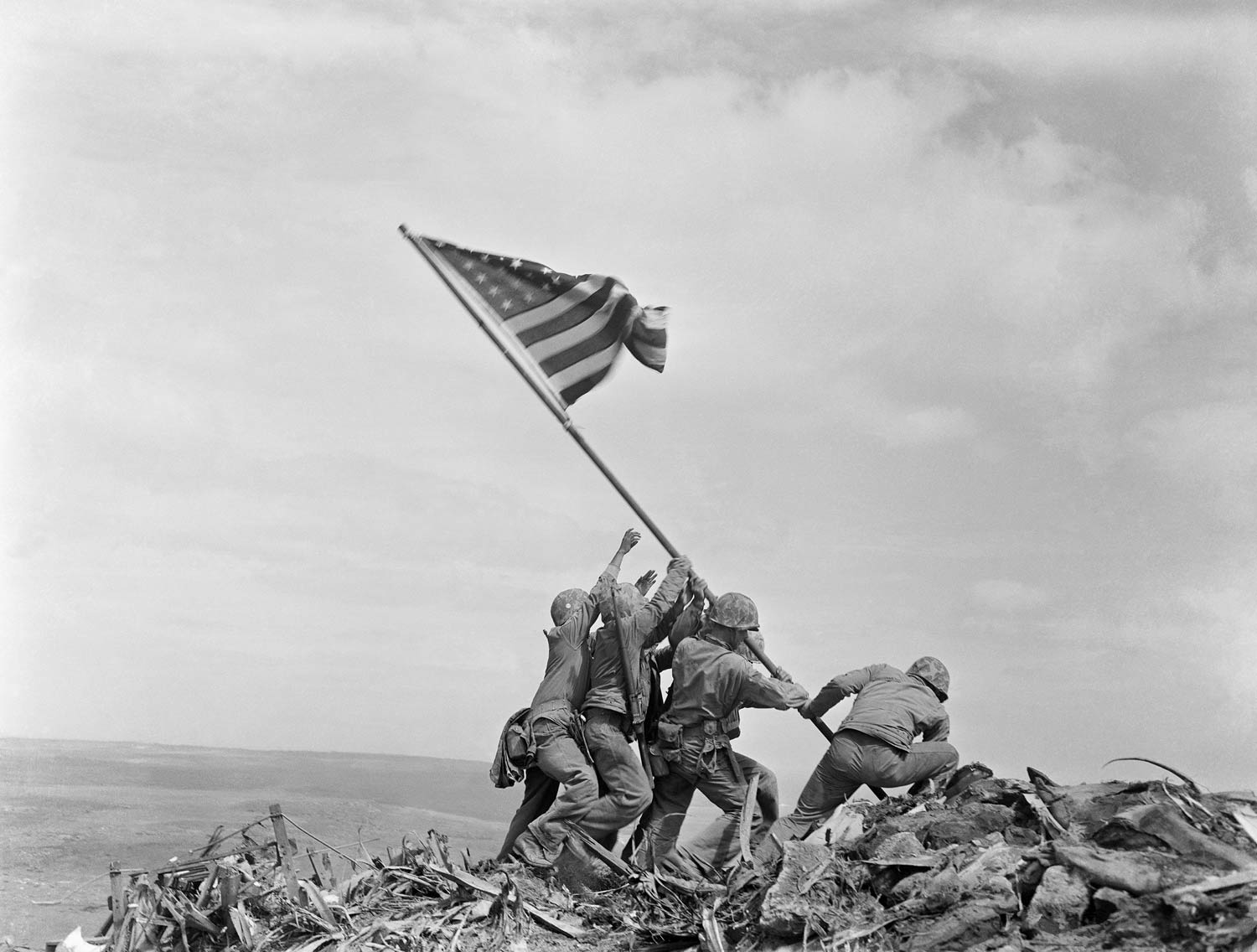 Out of the corner of my eye, I had seen the men start the flag up. I swung my camera and shot the scene. That is how the picture was taken, and when you take a picture like that, you don’t come away saying you got a great shot. You don’t know – Joe Rosenthal
Out of the corner of my eye, I had seen the men start the flag up. I swung my camera and shot the scene. That is how the picture was taken, and when you take a picture like that, you don’t come away saying you got a great shot. You don’t know – Joe Rosenthal
A little bit of digging and it turns out that this image, one of incredible importance and significance to American history and symbolism, is actually staged.
Below is the first raising of the flag

The Falling Man – Richard Drew
The Falling Man is one of the most iconic and powerful photographs in history. This haunting image was captured by photojournalist Richard Drew back in September 2001, shortly after the September 11th attacks. At the time, the city of New York was still reeling from the tragedy that had unfolded just a few days earlier, and it seemed that all hope had been lost. But as he stood on the observation deck of his nearby hotel looking down onto downtown, Richard spotted an extraordinary scene unfolding in front of him – a man falling to his death from one of the massive towers that had been hit by a plane. Captured at exactly the right moment, this single photograph came to symbolize the many tragic losses and brave acts that occurred on that horrific day. And while The Falling Man has since become symbolic of a nation’s grief and resilience in the face of overwhelming hardship, it is also widely recognized as a testament to both human resilience and photographer Richard Drew’s astounding talent behind the lens. Today, The Falling Man remains a timeless reminder of how far we will go when faced with tragedy.
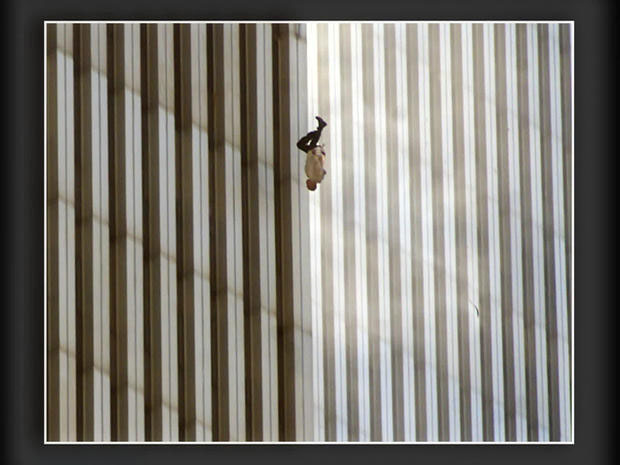
(Drew) “I’ll show it to somebody and they’ll say, ‘Oh, the “Falling Man” – Oh, no, I don’t wanna see that.'”
“Why do you think they have that reaction?”
“Because they can identify with it. They can identify, I think, that that could be me.”
Unpublished 9/11 – James Nachtwey
The iconic photograph Unpublished 9/11 by James Nachtwey is one of the most recognized images of the tragic events that occurred on September 11, 2001. This powerful and haunting portrait has become a symbol of both the tragedy and bravery exhibited by men and women on that fateful day.
The photograph was taken in New York City just moments after the first plane hit the North Tower of the World Trade Center. In it, we see a man slumped over against a concrete wall, his body slumped and broken from the force of impact. His face is blurred and ghostly, indicating perhaps his own shock at what he had witnessed. On the ground around him are shards of broken glass, evidence of how close he had been to being cut by the shattered window behind him. Despite this gruesome scene, there is something deeply poignant about this image. Whether it’s his intense stare or simply the overwhelming sense of loss and pain mixed with strength that this man exudes, Unpublished 9/11 is an unforgettable picture that captures a moment in history frozen in time. And while we’ll never know who this man was or what became of him after this photo was taken, we can still admire his immense courage as he faces one of mankind’s darkest hours
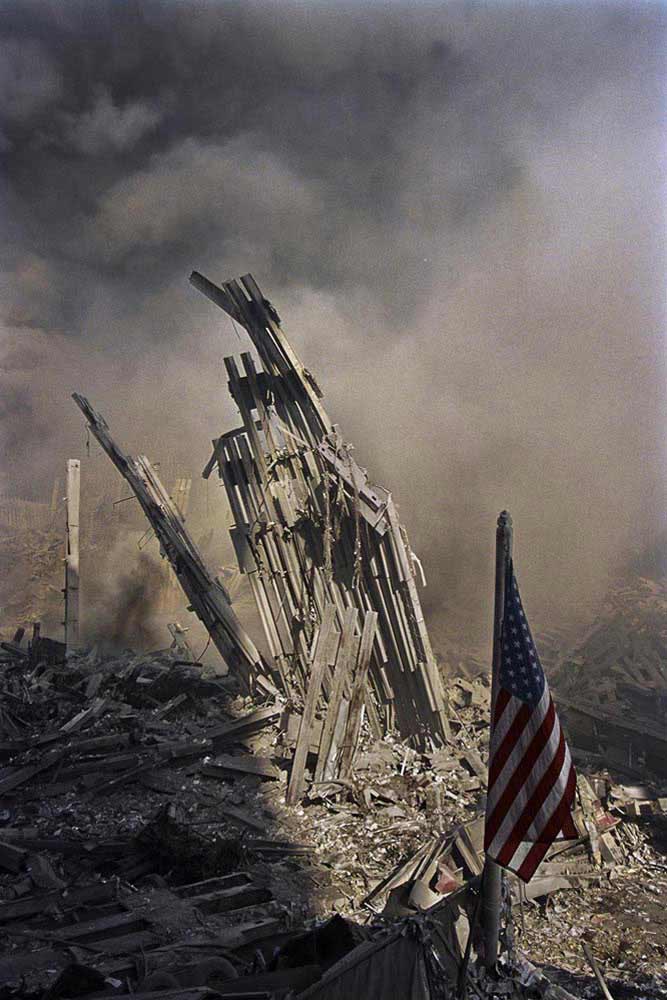
“When the truth is spoken, it doesn’t need to be adorned. It just needs to be simply stated, and often it only needs to be said once.”
The Soiling of Old Glory – Stanley Forman
The image of The Soiling of Old Glory is one of the most iconic photographs in history. Known simply as “The Soiling,” this image depicts the violent moment when Angela Davis, a civil rights activist and schoolteacher, was attacked by a mob during Boston’s busing crisis in 1975. The photograph was taken by Stanley Forman, a skilled photojournalist who worked for the local news channel at the time.
The details surrounding the photograph are as intriguing as the actual image itself. According to reports, Forman had been following Davis’ march through an open field when he spotted an angry crowd approaching from behind. Without hesitation, he spun around and began snapping photos as Angela Davis fell to her knees under a barrage of crude projectiles launched by a group of screaming teenagers. Despite being violently attacked himself, Forman managed to capture that defining moment on film – cementing his status as one of the most celebrated photojournalists in history.
Today, The Soiling remains one of the most talked-about images in modern history. Many see it as a powerful symbol of racial intolerance in America, while others view it simply as one photographer’s remarkable account of an incredible moment caught on camera.
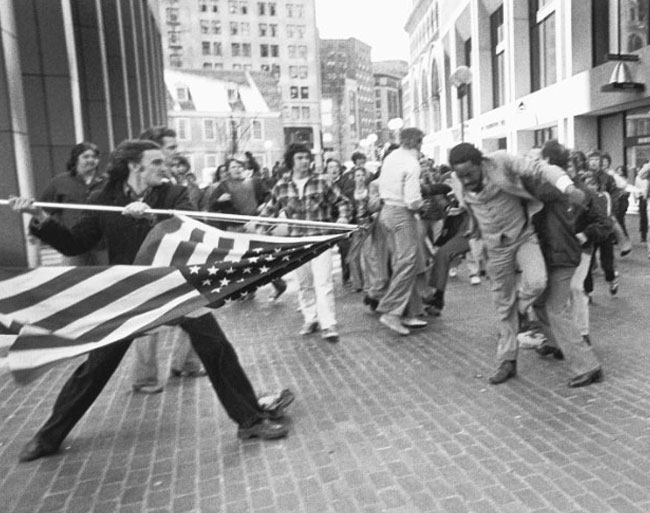
“For the time (it) has everything you want in the picture,”
Tank Man – Charlie Cole
Tank Man is one of the most famous photographs of all time, capturing a powerful moment of resistance in the face of political oppression. This image has been frequently referenced over the years, holding particular resonance in modern political debates about human rights and social justice. But where did this photograph come from and what was its original context?
The story begins in 1989, when pro-democracy protests were sweeping across China. At that time, hundreds of thousands of civilians gathered on the streets of Beijing to protest against communist rule, with many calling for democratic reforms and an end to government corruption. During these protests, known as the Tiananmen Square uprising, protesters faced violent crackdowns by Chinese authorities and experienced countless acts of brutality and intimidation.
One such incident occurred on June 5th, 1989 when a group of civilians blocked a convoy of tanks as it moved through Beijing. The iconic photograph that we now call Tank Man shows a lone man standing in front of several tanks, stopping them with nothing more than his own two hands and determination. While the identities and fates of those involved are still unknown today, this image continues to resonate as a powerful symbol of courage and defiance in the face of oppression. And while it originally captured a specific moment in history
You may well have seen this incredibly famous photograph, but did you know it was cropped?

This version feels so much more powerful

Keep Calm and Carry On – Fred Morley
The “Keep Calm and Carry On” slogan was created in 1939 by the British government during World War II. The phrase was intended to boost morale among the British people during a time of great stress and uncertainty. The original poster featured a simple, red crown with the words “Keep Calm and Carry On” printed in white. Despite its humble origins, the poster became one of the most iconic images of the war. In 2000, an antique dealer named Stuart Rashbrook came across a copy of the poster in a box of old books. He decided to frame it and put it on display in his shop. The poster quickly became a cult classic, and copies of it can now be found all over the world. Today, the image is synonymous with British stoicism and resilience in the face of adversity.
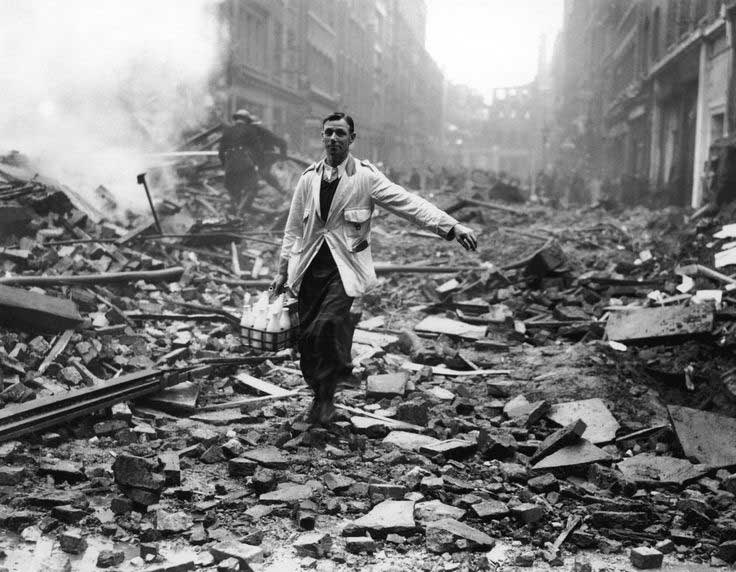
The slogan ‘keep calm and carry on’ was never actually officially used. It was printed on posters to be hung inside post offices in the event of a Nazi take over. However, as WW2 ended how it did, they were never used. Even so, this image depicts the defiant spirit of the time.
Guerrillero Heroico – Che Guevara by Alberto Korda
The iconic photograph Guerrillero Heroico, taken by the Cuban photographer Alberto Korda in 1960, has become one of the most recognizable images in history. Depicting a passionate and determined Ernesto “Che” Guevara marching through a street in Havana with his fist raised towards the sky, this powerful image encapsulates everything that made Guevara such a complex and fascinating figure: his blend of revolutionary fervour and political ideals, his passion for social justice, and his sheer determination. In capturing this defining moment in Che’s life, Korda succeeded in immortalizing him forever as one of the most important figures of the 20th century. And while this photograph is now firmly embedded in our collective cultural consciousness, it has also become much more than just a symbol of social progress – it is now recognized as a masterpiece of photography and an emblem of human resilience. Indeed, few images capture the human spirit quite like this remarkable photograph does. And as long as we continue to celebrate those who are willing to fight for their beliefs, regardless of the odds against them, then this enduring image will never be forgotten.
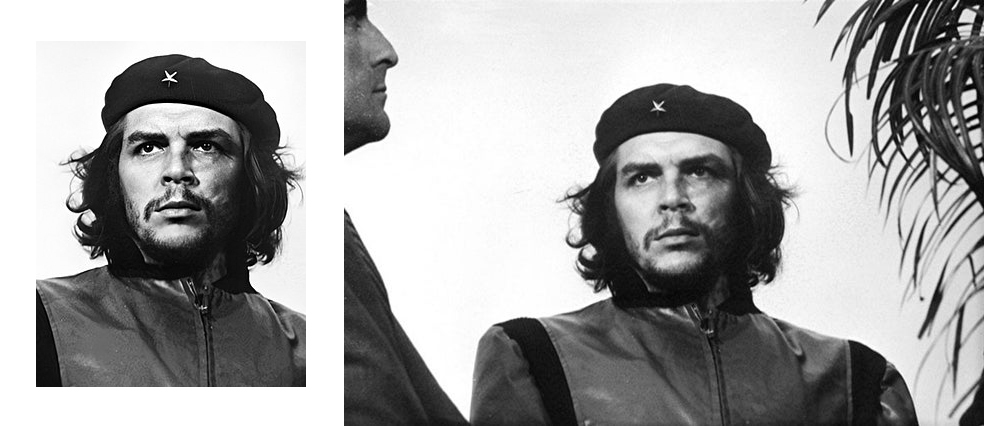
No doubt you’ve encountered this image before. Adopted by groups around the world as a symbol of revolution. I recommend digging deeper into the history of Che before putting his face on your t-shirt…
“…the first time I saw the picture by Alberto Korda, I was not even slightly interested in the author. I was only fifteen, and it was the picture that had drawn us – many for the first time – to gather in the streets…” Photographer Giorgio Mondolfo.
Is this what makes an image iconic and worthy of being engrained in the public memory? You see it and the immediate reaction is to be stirred. No critique of the image is even possible, because of what it stands for and represents.
Kevin Carter – The Vulture & The Little Girl
The Vulture and the Little Girl is a 1993 photograph by Kevin Carter. The photo shows a vulture waiting near a starving Sudanese child who has collapsed from hunger. The image sparked international outrage and helped to raise awareness of the famine in Sudan. However, it also generated criticism, with some accusing Carter of exploiting the suffering of the child. Carter himself was deeply affected by the photo, and he committed suicide just four months after it was taken. The Vulture and the Little Girl remains one of the most controversial images in photojournalism, but its impact cannot be denied. The photo continues to remind us of the human capacity for both callousness and compassion, and it serves as a powerful reminder of the devastating effects of famine.

Carter won the Pulitzer Prize for this photograph, three months later he committed suicide.
It genuinely pains me to post this picture. It’s overwhelming to look at. At the same time, it must be remembered that these atrocities still happen today. Countries are at war, people are starving. We must never forget that many of us are in a privileged position and should do everything within our power to be good to each other.
The image was published with this caption: “In a move meant to placate the West, the Sudanese Government is opening parts of the country’s famine-stricken south to relief operations, but for some, it could be too late. A little girl, weakened from hunger, collapsed recently along the trail to a feeding center in Ayod. Nearby, a vulture waited.”
Take a moment to consider this newspaper clipping.

The photograph, placed next to an advert for Tiffany & Co. The two extremes of existence. I can’t verify if this clipping is real, but it seems to be directly from the NY Times archive.
Lunch atop a skyscraper – Charles C Ebbets
The famous photograph Lunch atop a skyscraper was taken by Charles C Ebbets in 1932. The image shows workers taking a break from their construction work on the 69th floor of the Rockefeller Center in New York City. At the time, the Rockefeller Center was the tallest building in the world, and the workers were risking their lives to build it. The photograph captures both the majesty of the cityscape and the human spirit of those who built it. Today, Lunch atop a skyscraper is one of the most iconic images of 20th-century America.

This photograph as staged as part of a publicity stunt for the new RCA building in New York. Here is the crazy man himself taking the picture.
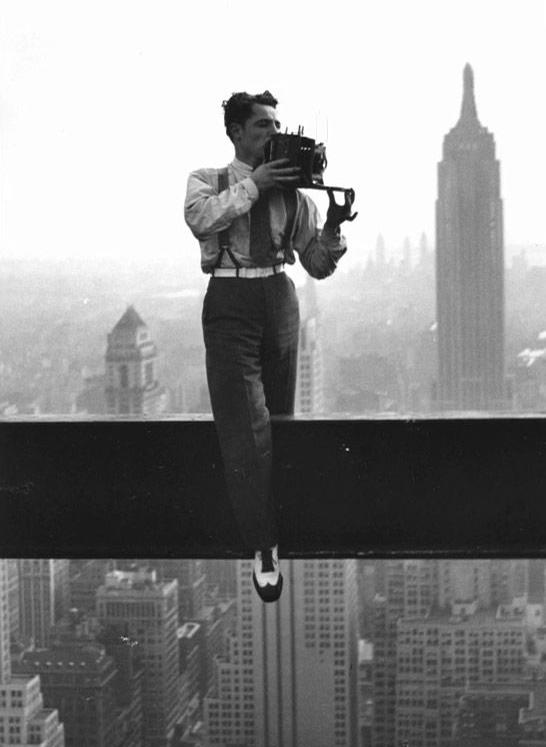
Mushroom Cloud Over Nagasaki – Lieutenant Charles Levy
On August 9, 1945, just days after the United States dropped an atomic bomb on Hiroshima, another bomb was dropped on Nagasaki. The second bomb, code-named “Fat Man,” killed an estimated 40,000 people outright and injured tens of thousands more. The photo of the mushroom cloud rising over Nagasaki is one of the most iconic images of the 20th century. It was taken by Lieutenant Charles Levy, a Navy photographer who was aboard the plane that dropped the bomb. Levy took dozens of photos that day, but it is the photo of the cloud that has become famous. In the years since the bombings of Hiroshima and Nagasaki, the photo has come to symbolize the devastating power of nuclear weapons. Today, it serves as a reminder of the horror of war and the need for peace.

Upon seeing the detonation of the bomb he invented, Robert Oppenheimer quoted a piece of Hindu scripture from the Bhagavad Gita: “Now I am become Death, the destroyer of worlds”
The Pillars of Creation – NASA
In 1995, the Hubble Space Telescope captured one of the most iconic images in the history of astronomy: The Pillars of Creation. The photograph showed three massive pillars of gas and dust, illuminated by the light of nearby young stars. The Pillars were part of a much larger cloud known as the Eagle Nebula, and they provided a stunning glimpse into the process of star formation. In the years since The Pillars of Creation was taken, Hubble has continued to produce amazing images of our universe. However, The Pillars will always hold a special place in our hearts, as they remind us of the wonder and beauty of the cosmos.
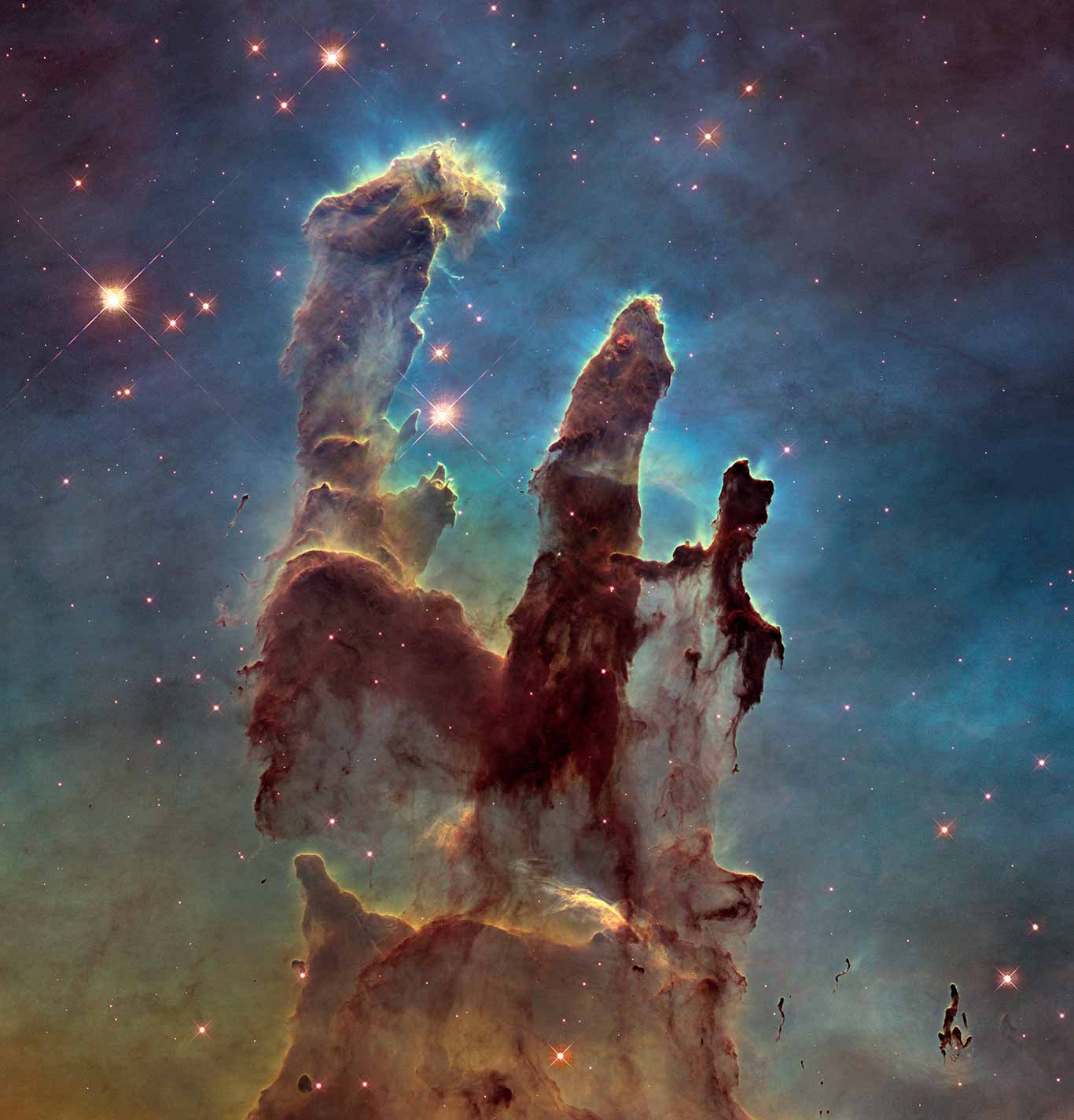
This image was taken by the Hubble telescope, which means that in the year that the James Webb telescope is being deployed (which is 10x more powerful), we’ve got an exciting time ahead of us for space exploration and photography.
Check out this amazing photograph of the exact same scene, but filtered to show only the infrared end of the light spectrum.
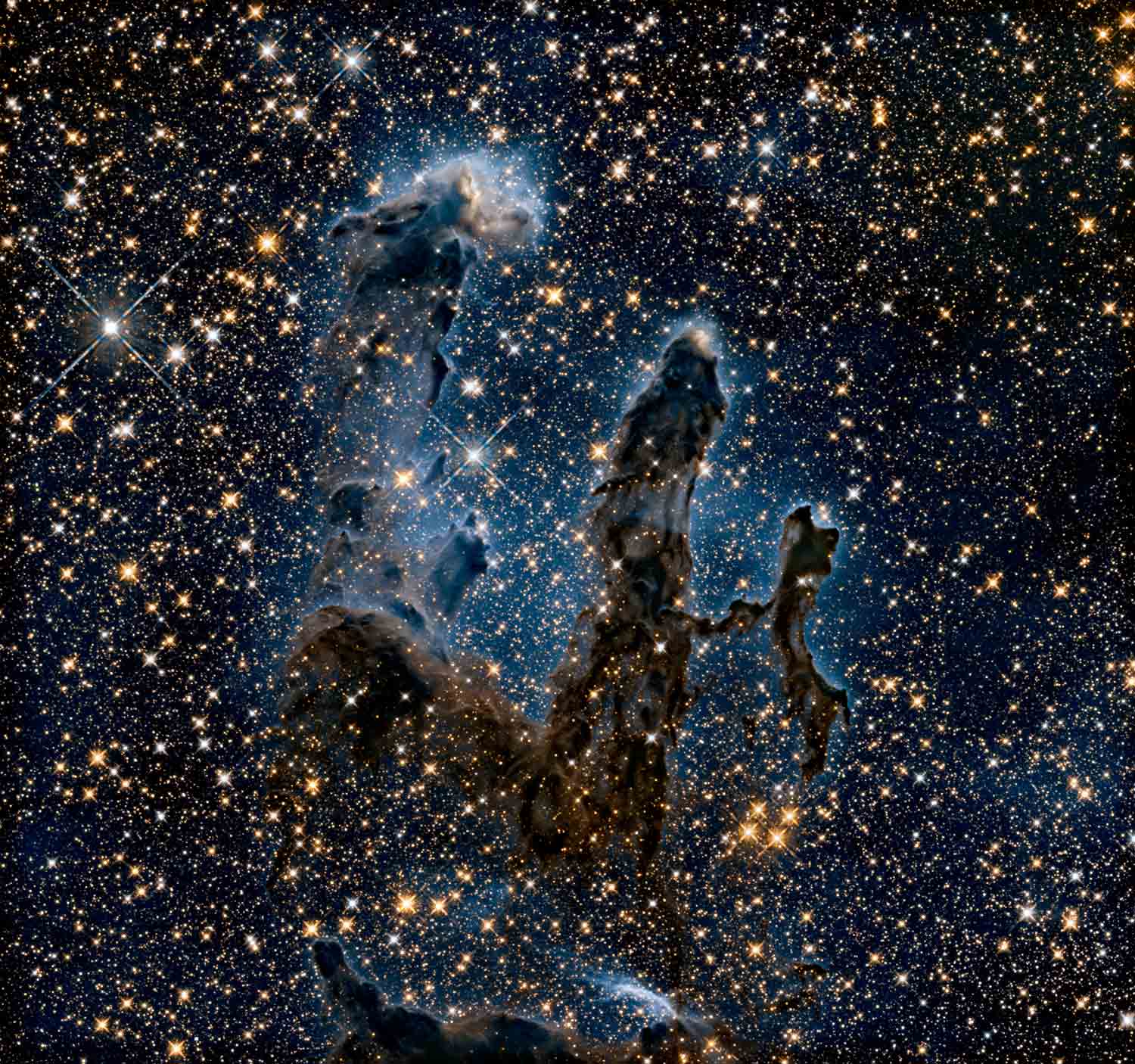
The Moonlanding – Neil Armstrong
The iconic photograph known as The Moonlanding was taken by astronaut Neil Armstrong during the historic Apollo 11 mission to the moon. Though the event is often regarded as a singular achievement in human history, it actually represents the culmination of countless efforts and years of hard work undertaken throughout various eras of modern civilization.
The earliest man-made objects to travel beyond Earth’s atmosphere date back to the early 1900s, when scientists launched various unmanned balloons into space. These exploratory tools allowed humans to begin to make sense of the vastness of outer space and paved the way for future missions that would send people up into the sky. Throughout decades of experimentation and research, scientists slowly improved their understanding of what it would take to successfully reach the moon. Inspired by these achievements, a small team of engineers and astronauts came together at NASA in 1959 and began laying out plans for a manned mission to our nearest celestial neighbour. This team was led by legendary aerospace engineer Wernher von Braun, who would serve as a mentor for many members of Apollo 11 along with guiding them through their painstaking journey towards final success.
In July 1969, after years of preparation and rigorous training, Neil Armstrong stepped out onto the surface of the moon and took his famous shot.
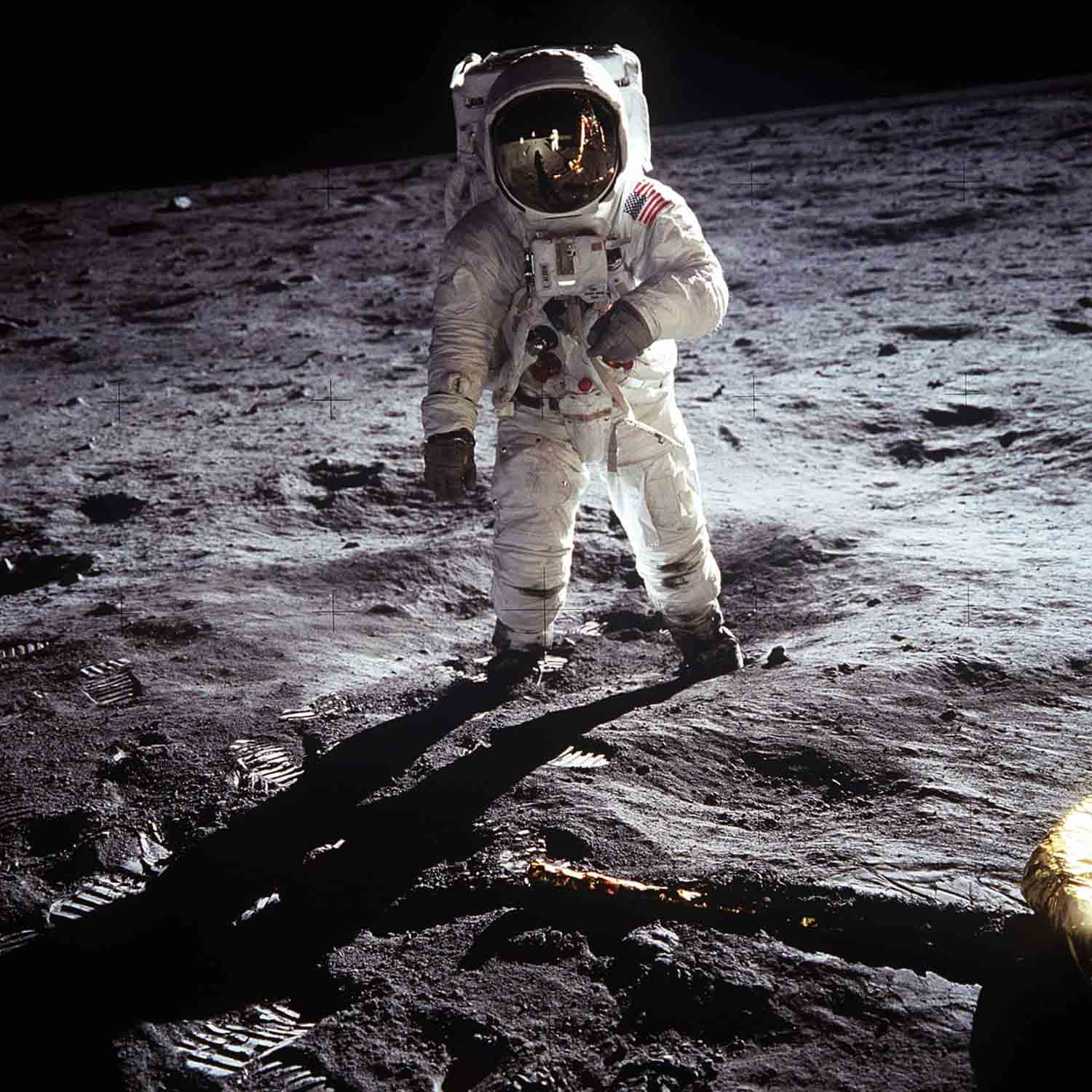
Possibly the most famous photograph of the last 100 years, accompanied by the most famous quote of all time: “That’s one small step for man, one giant leap for mankind.”
Migrant Mother – Dorothea Lange
In February of 1936, photographer Dorothea Lange was traveling through California when she came across a migrant worker camp near Nipomo. Lange took several photographs of the camp and its residents, but it was one in particular that would go on to become iconic. The photograph, which came to be known as “Migrant Mother,” shows a mother and her children huddled together in a tents. The mother’s face is weary but resolute, and her children look out at the camera with wide eyes. The photograph captures the hardship of the Great Depression, and it quickly came to symbolize the plight of the American migrant worker. Today, “Migrant Mother” is considered one of the most important photographs of the 20th century, and it continues to shed light on the challenges faced by those who live on the margins of society.
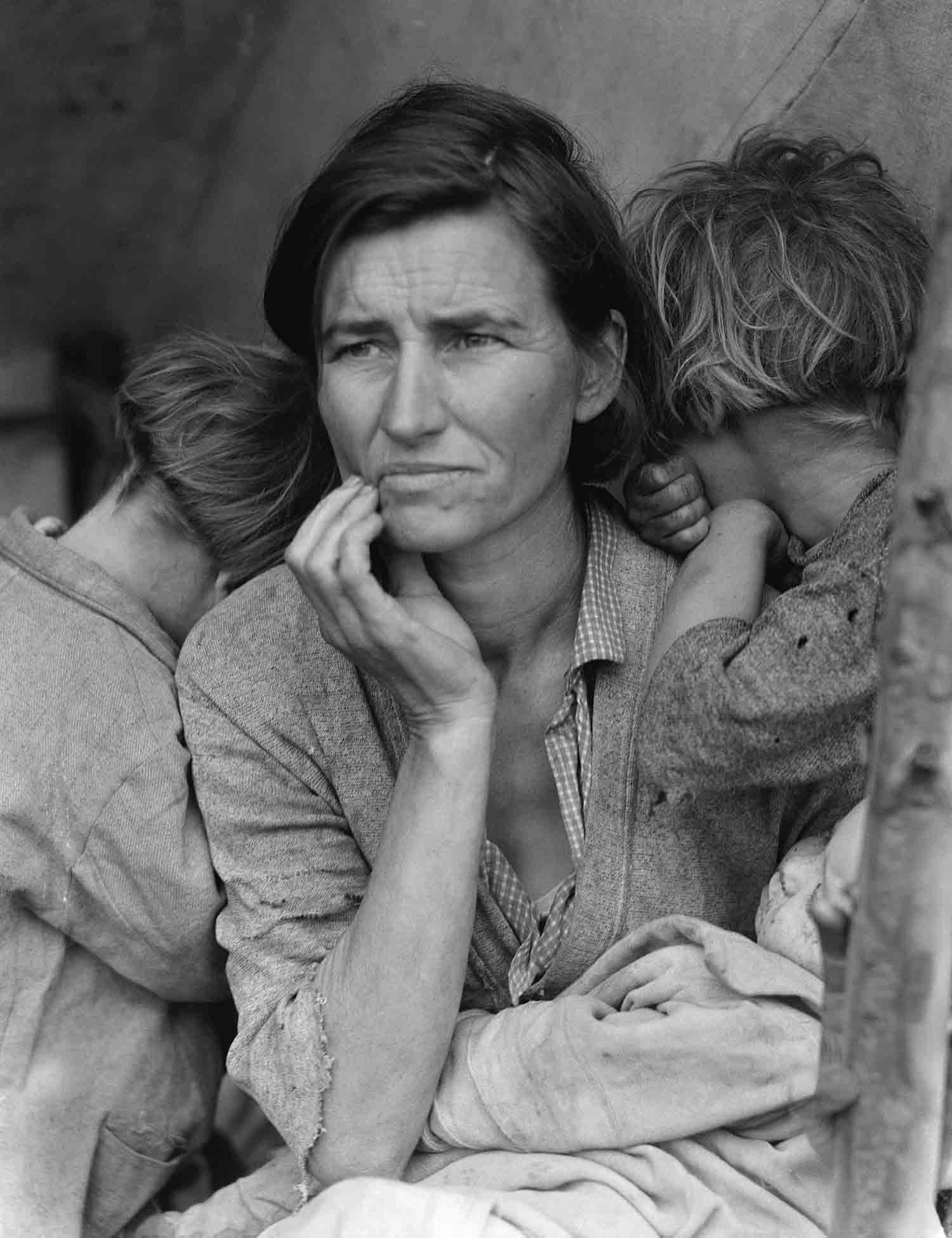
An image synonymous with the suffering during the American Great Depression. The picture depicts Florence Owen Thompson – Lange described Thompson’s situation, “She and her children had been living on frozen vegetables from the field and wild birds the children caught. The pea crop had frozen; there was no work. Yet they could not move on, for she had just sold the tires from the car to buy food.” Interestingly, when later interviewed, Thompson contested this story and claimed that she had never actually spoken to Lange.
The Hindenburg Disaster, Sam Shere
The Hindenburg Disaster is one of the most famous photographs in history, and its origins are shrouded in mystery. The first known version of the photo was taken by photojournalist Sam Shere, who had been on assignment with a newspaper in New Jersey at the time of the disaster. Although it is unclear how exactly Shere came to be on the scene, what we do know is that he managed to capture an iconic image of the flaming airship as it crashed to earth. Despite being published in countless newspapers and magazines around the world, many details about Shere’s life remain unknown. There are conflicting reports about his age and birthplace, as well as a few different notions about what happened to him after the disaster. What is clear, however, is his important role in preserving this incredible image for posterity. In fact, it is now cemented as a cornerstone of 20th-century history and will continue to stand as a lesson for generations to come.
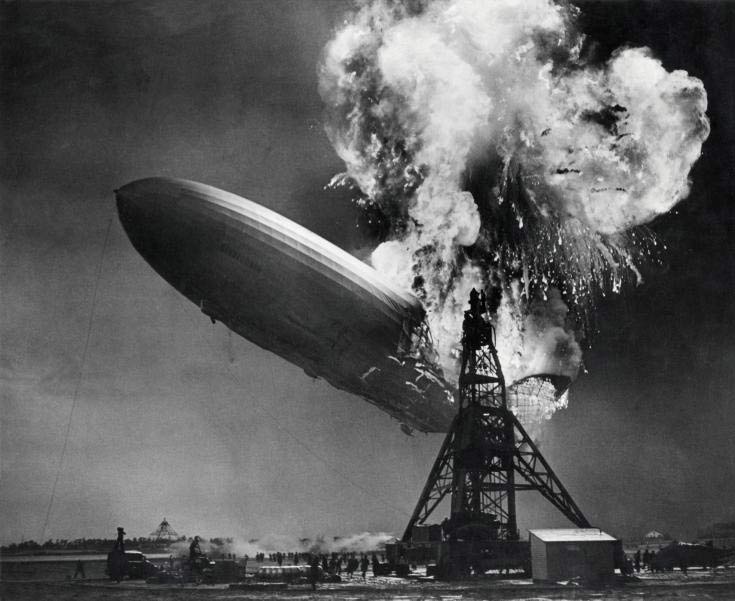
I… I… I’m sorry. Honest: I… I can hardly breathe. I… I’m going to step inside, where I cannot see it. Charlie, that’s terrible. Ah, ah… I can’t. Listen, folks; I… I’m gonna have to stop for a minute because I’ve lost my voice. This is the worst thing I’ve ever witnessed – Herbert Morrison, Transcription of WLS radio broadcast describing the Hindenburg disaster
Muhammad Ali Vs. Sonny Liston – Neil Leifer
The photograph of Muhammad Ali Vs. Sonny Liston is one of the most iconic images in boxing history. The famous match took place on May 25th, 1965 in a heavy rainstorm at the historic Comiskey Park in Chicago. It was the second time these two great champions had gone head to head, with Ali eventually coming out on top after knocking out Liston in the first round. But it wasn’t just the triumphant result that people remember about this legendary fight; it was also the incredible photograph captured by photographer Neil Leifer at just the right moment. This remarkable image perfectly captures both the intensity and drama of that fateful night, showcasing Ali’s audacious style and footwork as he lunges forward towards his opponent while seemingly defying gravity as he floats through the air to deliver his knockout blow. This iconic photo has become an enduring symbol of not only boxing itself, but also of perseverance and courage in the face of adversity, cementing its place as one of the most significant moments in sports history.
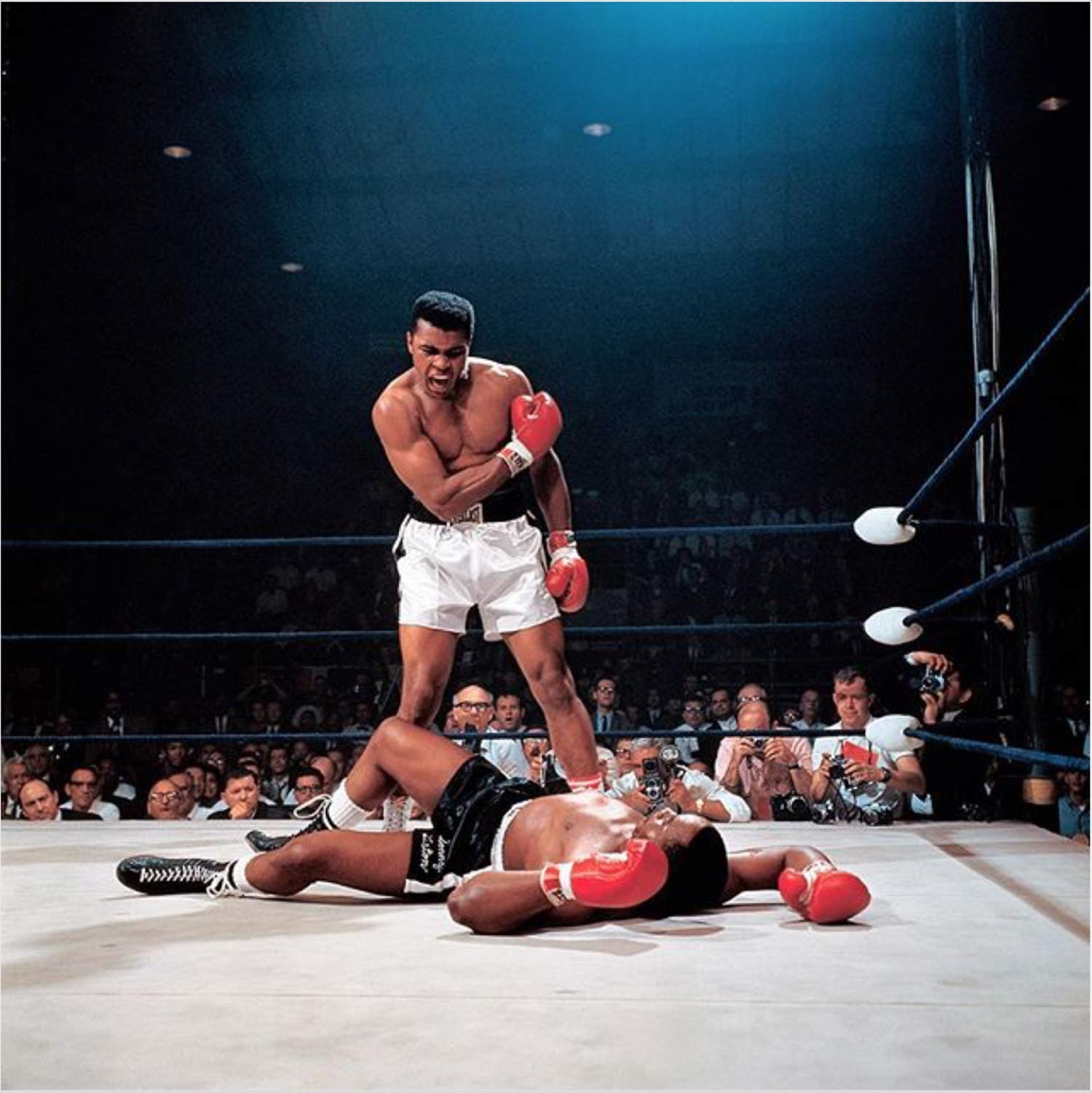
“I was obviously in the right seat, but what matters is I didn’t miss. That’s what separates best sports photographers from the ones that are just good — you have to get lucky in sports photography.” – Leifer
Saigon Execution – Eddie Adams
The famous photograph Saigon Execution was captured by photojournalist Eddie Adams in 1968. This dramatic image undoubtedly stirred up a lot of controversy, and it continues to be one of the most iconic photos in history. While there is still much debate over the circumstances surrounding the photo, what is certain is that the photo tells the story of a pivotal moment in the Vietnam War.
Eddie Adams was on assignment for the Associated Press and was waiting in position near an intersection to capture images of soldiers marching down a street when he suddenly heard gunshots go off. Upon rushing toward the scene, he encountered South Vietnamese General Nguyen Ngoc Loan who had just executed a suspected Viet Cong member at point-blank range. Despite knowing that he risked putting himself in danger, Eddie quickly drew his camera and took a single shot that perfectly captured both the perpetrator and victim, leaving viewers with no doubt about what had just taken place.
The impact of Saigon Execution was immediate and far-reaching. The picture exposed the brutality of war to millions of people around the world, while also starkly highlighting America’s conflicted stance on involvement in Vietnam during this period.

“There’s something in the nature of a still image that deeply affects the viewer and stays with them. The film footage of the shooting, while ghastly, doesn’t evoke the same feelings of urgency and stark tragedy.” Ben Wright
The first ever photograph – View from the Window at Le Gras – Nicéphore Niépce
The first ever photograph was taken by Nicéphore Niépce in the early 1800s. Named View from the Window at Le Gras, this famous image has come to epitomize not only the history of photography, but also the very nature of human curiosity and exploration. This pioneering picture was captured using a camera obscura, a device that uses pinholes and dark rooms to project images onto a surface. While Niépce’s process was rather inefficient, allowing for just a few exposures before requiring repairs, it paved the way for more modern photography techniques. In fact, many contemporary photographers look back to View from the Window at Le Gras as inspiration for their own work.
Through its reflections on observation and innovation, View from the Window at Le Gras continues to capture the imagination of both professional and amateur photographers alike. With its blend of technical precision and artistic vision, this iconic image represents one of the most important milestones in photographic history. And it is this lasting impact that makes The First Ever Photograph truly one-of-a-kind.
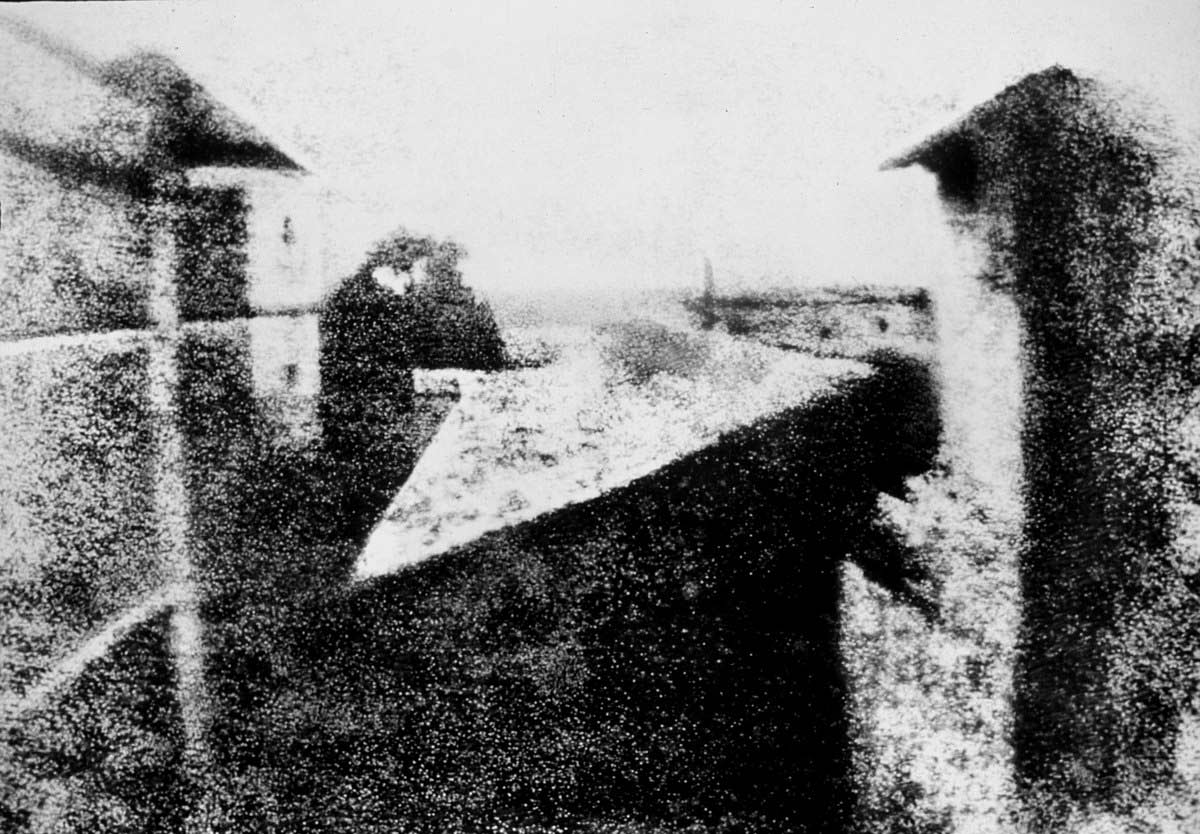
The Tetons and the Snake River – Ansel Adams
The Tetons and the Snake River is one of the most famous photographs in American history. Taken by Ansel Adams in 1942, the photo shows the rugged beauty of the Grand Teton mountain range in Wyoming. Adams was able to capture the scene with great detail, thanks to his use of a large-format camera. The photo quickly became popular, and it has been featured on postcards, calendars, and even in a U.S. postage stamp. In recent years, the photograph has been used to raise awareness about the importance of environmental conservation. The Tetons and the Snake River is a reminder of the majesty of nature, and it serves as an important visual record of America’s natural heritage.

You don’t take a photograph, you make it – Adams
Winston Churchill – Yousuf Karsh
One of the most iconic photographs of the twentieth century is Yousuf Karsh’s portrait of Winston Churchill. Taken in 1941, the photo shows Churchill looking resolute and determined, with a cigar clamped firmly in his mouth. The photo was taken during a brief meeting between Karsh and Churchill, and it quickly became one of the most famous portraits in the world. Today, the original photograph hangs in the Library of Congress, and it continues to be an enduring symbol of Churchill’s courage and resolve.
Supposedly Karsh took the cigar that Churchill was smoking at the time out of his mouth right before taking this picture.

“Character, like a photograph, develops in darkness.” – Karsh
Behind the Gare Saint-Lazare – Henri Cartier Bresson
Behind the Gare Saint-Lazare is one of Henri Cartier-Bresson’s most iconic and celebrated photographs, embodying his pioneering concept of the “decisive moment.” The black-and-white image captures a man in mid-leap over a large puddle behind the Gare Saint-Lazare, one of Paris’s main train stations. The composition is deceptively simple but rich in symbolism, geometry, and poetic tension.
In the foreground, the man’s silhouette is frozen in mid-air, arms and legs outstretched, about to land—perhaps wetly—on the far side of the puddle. His reflection in the water mirrors his form with ghostly precision, creating a double-image effect that amplifies the sense of suspended time. His leap is almost balletic, but the viewer instinctively senses the imminent splash.
The background features a stark iron fence, posters peeling on a wall, and blurred scaffolding. These elements frame the action while emphasizing urban decay, industry, and the transient bustle of city life. Despite the stillness of the objects around him, the man’s jump injects a feeling of movement and fleeting grace.
A curious detail: in the distance, a poster for a dancer (possibly the famed ballet dancer Harriet Toby) echoes the man’s leap with outstretched limbs, reinforcing the image’s theme of motion and reflection.

“To take a photograph is to align the head, the eye and the heart. It’s a way of life” – Bresson
Why is this image famous? It kickstarted the entire notion of capturing a ‘moment’, the decisive moment as Bresson himself called it. Photography was no longer just a record of events, it entered into the world of art.
The Horse in Motion – Eadward Muybridge
The horse in motion. It’s a photograph that has been reprinted and replicated countless times, but where did it come from? The photo was taken by Eadward Muybridge in 1878, and it’s often considered to be the earliest example of a stop-motion photograph. Muybridge was commissioned by Leland Stanford, a wealthy businessman and horse racing enthusiast, to settle a bet. Stanford believed that all four hooves of a galloping horse left the ground at the same time, but others disagreed. To prove his point, Stanford enlisted the help of Muybridge, who was an experienced photographer. after numerous attempts, Muybridge finally captured the perfect shot, proving that Stanford was right all along. The photo may not seem like much today, but it was truly ground-breaking at the time, and it paved the way for the development of motion pictures.

The images that proved that a horse gallops with all four feet from the floor.
“Only photography has been able to divide human life into a series of moments, each of them has the value of a complete existence.”
Milk Drop Coronet – Howard Edgerton
In 1957, Howard Edgerton took a photograph that would go on to become one of the most iconic images of the 20th century. Titled “Milk Drop Coronet,” the photo captures a single drop of milk as it splashes into a bowl of milk. The picture is remarkable not only for its technical perfection, but also for its artistic qualities. The stark contrast between the white milk and the black background creates a powerful visual effect, and the way the milk droplet is caught in mid-air gives the photo a sense of motion and energy. In addition, the photo has an air of mystery and intrigue, as it seems to capture a moment that is both mundane and extraordinary at the same time. Today, “Milk Drop Coronet” is recognized as one of the great masterpieces of photography, and it continues to fascinate viewers all over the world.

Why is this image iconic? The process of capturing high speed images using flash had to be invented in order to take it. With the advent of bright flash and high speed syncing of the flash and the camera opened up a whole new world to explore and further expanded our understanding of the physical world.
“The trick to education is to teach people in such a way that they don’t realize they’re learning until it’s too late”
